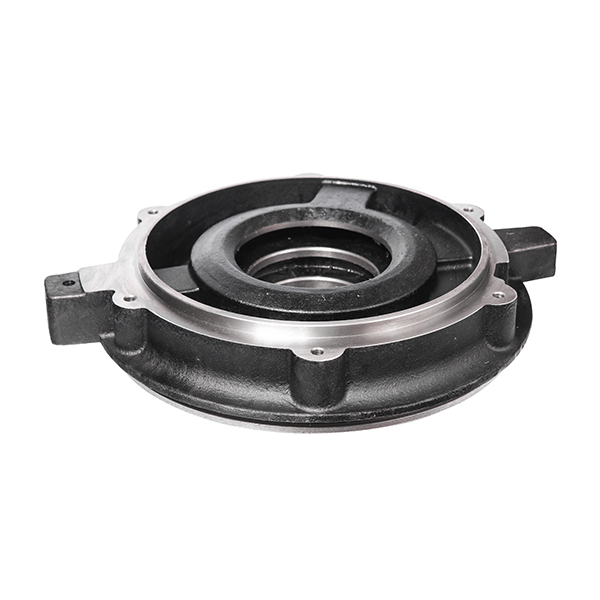Mobile:+86-311-808-126-83
Email:info@ydcastings.com
English
Understanding the Importance and Applications of Plumbing Pipe Caps in Home Installations and Repairs
Understanding Plumbing Pipe Caps Functions and Applications
In the world of plumbing, certain components play crucial roles in maintaining the integrity of a water supply system. One such essential component is the plumbing pipe cap. These seemingly simple fixtures are integral in ensuring smooth operations within both residential and commercial plumbing systems. This article will delve into the various functions, types, and applications of plumbing pipe caps.
What are Plumbing Pipe Caps?
Plumbing pipe caps are fittings used to seal the ends of pipes, effectively blocking the flow of water and preventing any leakage or contamination. They come in various materials, including PVC, copper, and galvanized steel, allowing for flexibility depending on the specific plumbing requirements. Offered in different sizes and designs, pipe caps can cater to various pipe diameters and types, making them a versatile solution in plumbing.
Functions of Plumbing Pipe Caps
1. Sealing Off Pipes The primary function of a pipe cap is to seal the end of a pipe. This is essential in preventing liquids or gases from escaping, thus minimizing wastage and potential hazards.
2. Maintaining Pressure In pressurized systems, pipe caps help maintain the pressure within the pipes, ensuring efficient movement of water and preventing backflow.
3. Providing Access Points In some instances, pipe caps can serve as access points for maintenance or inspection. Removable caps allow plumbers to enter the system for repairs, checks, or modifications without the need to dismantle extensive plumbing infrastructure.
4. Protecting Pipes from Debris During construction or renovation, unsealed pipes can be exposed to dirt, dust, and debris. Using pipe caps helps to protect open pipe ends from contamination, thereby safeguarding the quality of the water supply.
5. Enhancing Aesthetic Appeal In some applications, particularly in visible plumbing installations, caps can be used to create a more neat and finished appearance, thus enhancing the overall aesthetic.
Types of Plumbing Pipe Caps
plumbing pipe cap

Plumbing pipe caps generally fall into two categories based on their design
1. Standard Caps These caps are designed to fit over the end of a pipe, providing a tight seal. They are commonly used in various plumbing systems and can be found in a range of materials.
2. Threaded Caps Threaded pipe caps screw onto the end of a pipe that has been threaded. This kind of fitting provides an extra level of security and is often used in high-pressure applications.
Applications of Plumbing Pipe Caps
Plumbing pipe caps are widely used in various applications, including
- Residential Plumbing Homeowners commonly use pipe caps during DIY projects, repairs, or plumbing upgrades, particularly when securing unused lines or sealing off pipes during renovations.
- Industrial Plumbing In industrial settings, pipe caps are essential for managing complex systems involving high pressure or corrosive substances. They ensure safety and operational efficiency in large-scale plumbing systems.
- Water Supply and Distribution In municipal water systems, pipe caps help control and manage water flow, ensuring that the distribution remains seamless and free from contamination.
Conclusion
In conclusion, plumbing pipe caps may appear simple, yet they serve multiple critical functions in plumbing systems. From sealing off pipe ends to providing access points for maintenance, these fittings are indispensable in ensuring the functionality, safety, and efficiency of both residential and commercial plumbing applications. Understanding their functions, types, and applications can help individuals make informed decisions when planning or maintaining plumbing systems. As plumbing technology evolves, the importance of reliable components like pipe caps remains paramount in achieving a sustainable and efficient water supply system.
-
Premium Fan Housing & Motor Casing for Optimal AirflowNewsAug.31,2025
-
High-Performance Automobile Water Pump & Electric SolutionsNewsAug.30,2025
-
Expert Stainless Steel Casting | Precision & Durable Metal PartsNewsAug.29,2025
-
Precision Metal Castings: Aluminum, Stainless Steel & Die CastingNewsAug.28,2025
-
Superior Aluminum Castings in Automotive Engine PartsNewsAug.22,2025
-
Common Materials Used in Fan Housing ManufacturingNewsAug.22,2025











